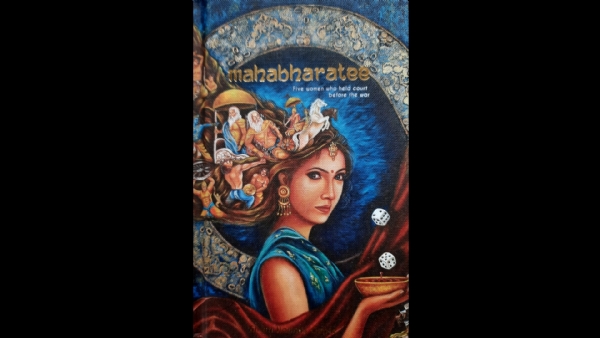Book Review: Mahabharatee – a Non-fiction Fiction
The author of Mahabharatee uses different characters to present some parts of Mahabharat from their perspective.
Total Views |
Mahabharatee is an unusual re-presentation of Mahabharata from the eyes of its key female characters. Why do I call it a non-fiction fiction? Because the author Shruti Hajirnis Gupte has only set the base of story of this book on a fictional situation. But, she has not played with the original Mahabharata story at all. She does not twist it as per her whims and fancy. She uses different characters to present some parts of Mahabharat from their perspective.
The senior most member of Kuru clan – Satyavati invites main female characters of Mahabharata to her tent the night before the Great War is to begin. They are Gandhari, Draupadi and Kunti. This is her last ditch attempt to stop the destructive war that would annihilate entire Kuru clan and also end with millions of human beings killed. It had to be avoided. Another woman of substance, Rukmini also lands up in this meeting while she is trying to meet Krishna before the war starts; rushing all the way from Dwarika.

This is an interesting premise. Shruti doesn’t try to create a modern day feminist narrative. She allows each character to etch out her story, the twists and turns in that character’s life that has finally brought her to this theatre of war. In the process, she is able to highlight how folly of men ultimately brings women to grief. She also brings out the strength of female characters – each of them denoting a different kind of strength. She does talk about how male dominance ends up in suffering of women, families and the society. But, she doesn’t shirk from talking about women’s follies too.
Another typical Bharatiya aspect of this story is that while men in the family fight, women can sit together and chat without bitterness of the men. This is true even today. Many of us would have seen brothers fighting over property or business matters, while women sit together chatting and serving the family.
There are arguments and counter arguments as these great women discuss how to stop the war or whether war should be stopped. Krishna enters the tent looking for Rukmini and joins the conversation. These conversations are the highlight of the book.
In the last part of the book author brings in her deep insight into the arguments of morality, ethics and statecraft. Propositions are complex and so are the arguments. She conveys thought provoking ideas through the women protagonists and Krishna. She uses Krishna to propound his theory of Karma and detachment that he actually speaks about on the battle field on the first day of the war while addressing Arjuna’s confusion.
The beauty of the book is that though the setting for the meeting of women characters is fictional and dialogues between the characters are written by the author, she does not fictionalise the real story of Mahabharat. She remains true to it. She provokes you to think and doesn’t treat any character of Mahabharat lightly. She shows that an writer can make her point and put forward her views, re-interpret itihasa without corrupting the actual story. Her reading and understanding of Bharatiya texts is admirable.
